Exploring West Africa
Red soils, burning sun, crystal waters, rain forests and deserts; in other words: Africa. Africa is a huge continent with so much diversity. When speaking about mainland we can see Arabic influence in the northern countries such as Egypt and Morocco, European influence in South Africa and then native African culture in the East and West. Both these parts are rather unexplored and undeveloped, with more risks for travellers, whether it is malaria, infectious diseases or safety; that is why when you are travelling to any of those countries you need to be extra cautious. In this article I am going to share with you my experience with exploring African culture in Dakar, Senegal and its adjoining Gorée Island.
Dakar is the capital of Senegal, lying on Africa´s west coast. Dakar is actually the most west point of the whole African continent. It is a former French colony, rich in French heritage, and predominantly Muslim. The city is quite developed compared to majority of the West African countries. It is known for its lively night life, a lot of good restaurants, shops and wonderful sandy beaches. When in Dakar, you should definitely visit the African Renaissance Monument, which is the tallest statue in Africa. It is made from bronze and it is located on top of a hill so to get there we had to climb a lot of stairs. It overlooks the Atlantic Ocean, some Dakar suburbs and a small volcano with a lighthouse. It was built to commemorate 50th anniversary of Senegal independence from France. As we were informed by a native tour guide, the statue caused a lot of controversy among the citizens of the whole country and the president who decided to build this statue became very unpopular. He was criticized for spending an incredible amount of money on building this 49 meter tall statue in the country where problems such as poverty, insufficient medical care and school system are still major issues. Besides the economic problem, the statue is criticized for its style as well, especially the appearance of persons depicted. They both wear revealing clothes, which is at variance with country´s predominant religion (Islam).
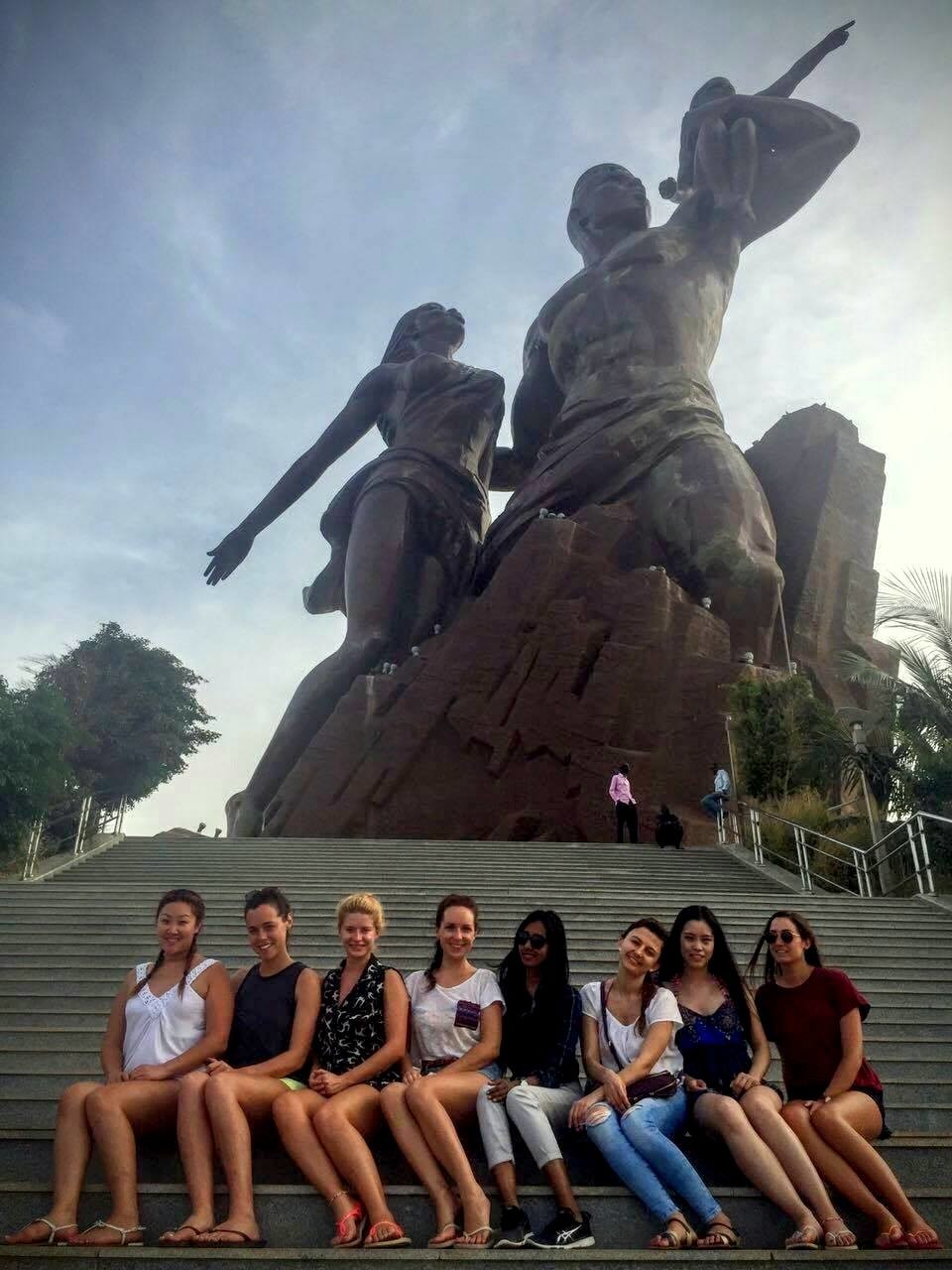
African Renaissance Monument. Dakar, Senegal.
Since the post is dedicated to West African culture, I have to mention one of its very strong features: the significance of Baobab tree, or “Tree of Life” for indigenous African people. There are numerous spiritual beliefs, superstitions, and traditional legends surrounding this tree. Baobab is believed to bring happiness and prosperity to everyone living in place where it grows. The baobab tree you can see on my picture below is actually growing in the middle of the road. A tour guide explained to us that because of the belief in these magical powers of Baobab, the road was built around it, to avoid cutting it out. Another popular belief is that tree spirits help to reach any decisions so people would often hold the meetings underneath the baobab tree whenever they need to discuss something of great importance. The baobab fruits are not used as nourishment only, but as medical remedies as well. Being rich in vitamin C and calcium makes it a great tool to fight a flu or cold. Baobab fruit is used as a snack for kids, or added to porridges. We tried the baobab juice, which was actually baobab pulp diluted with water, but still very thick; of brown reddish colour. I have to admit it tasted interestingly, I kind of liked it but definitely it was a very new flavour for me.
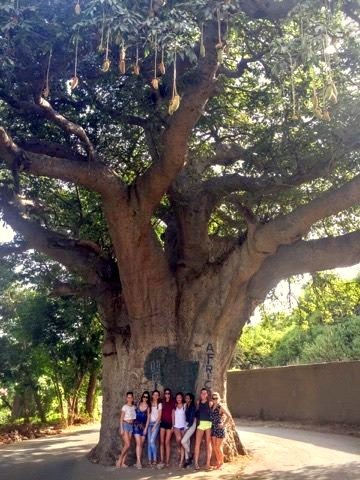
Icon of West African Culture: Baobab tree. Dakar, Senegal.
A tour around Dakar city, visiting the most west point of Africa and learning about the controversial statue and baobab tree and was just one part of the excursion. The other one was a quick trip to Gorée Island, which was only half an hour away by ferry.
Gorée Island
I have to say at the beginning, visiting this island was touching and truly unique experience. In the past Gorée Island used to play an important role in slave trade through Atlantic Ocean. Nowadays it is visited mainly because of famous “The House of Slaves” museum. We all know about slavery, I wrote many essays on this topic at the university, but being physically at place where it was all happening, hearing about the cruel stories that took place in the very same room we were standing was a completely different perspective on learning about that sad part of our history. The museum was more like a memorial to slave trade legacy; it was a two-storey house with very small dark rooms on the ground floor where slaves would live and upstairs’ offices where all the trading and meetings were happening. There was one particular place in the house that made majority of people crying when seeing it; it was called “Door of No Return” and it is exactly what it sounds like. It is a door opening to the ocean from which old, sick or revolting slaves would be thrown away as food for fish.
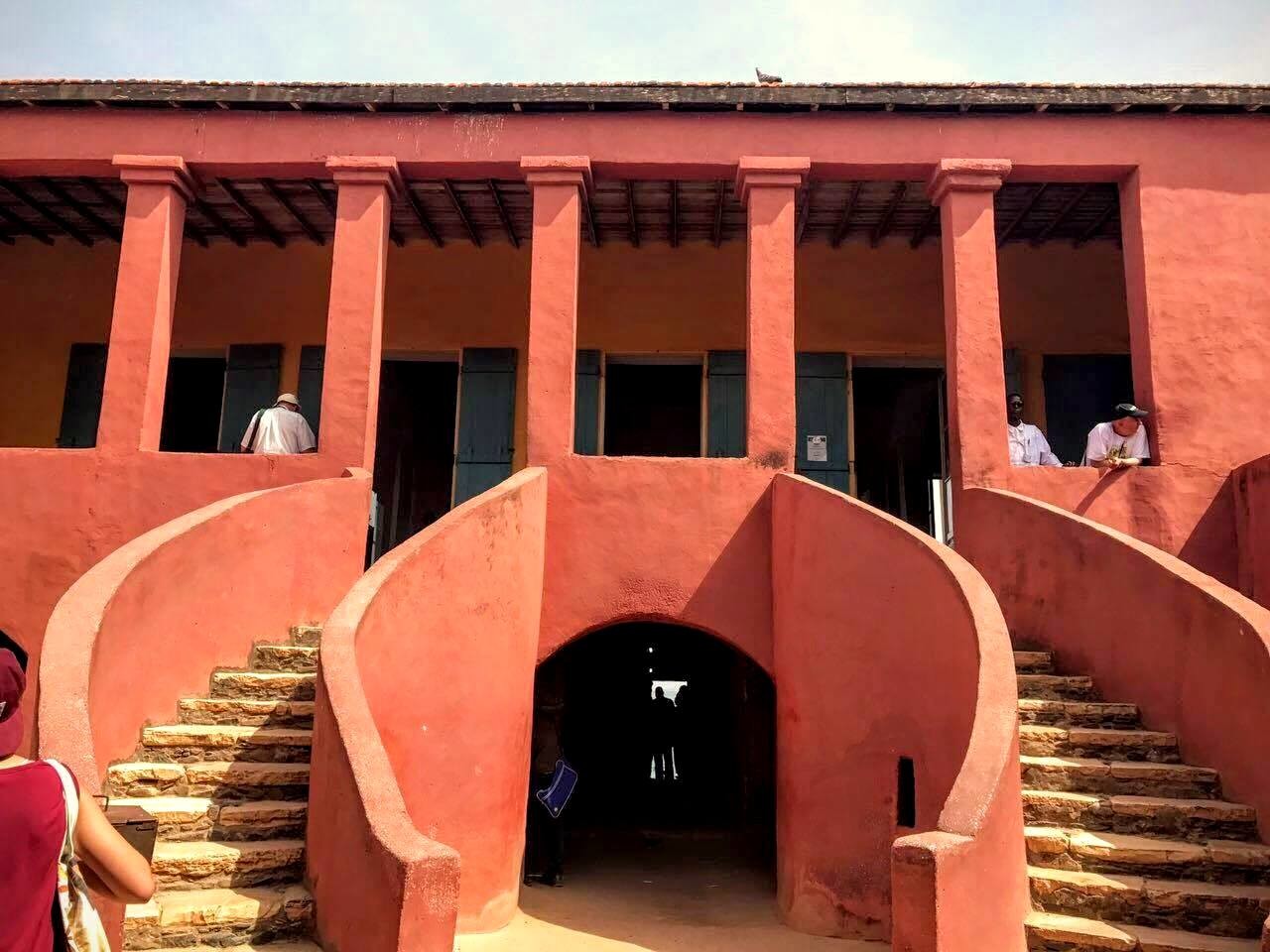
The House of Slaves.
After visiting the museum we went for a walk around the island, observing the everyday life of local inhabitants. It actually felt as if time stopped; people sitting on the benches underneath the trees, chatting and greeting us heartily, others hard working in their small shops selling handmade necklaces, rings, clothes, and different kinds of African art, such as statues or paintings. What I liked the most from all the handcrafts on the island was sand painting. The technique looked quite complicated, but the craftsman was so skilled and confident in what he was doing. Watching him creating all these different sand pictures of African landscape, animals or people, was just a pure pleasure. We all supported him by buying a few of his pictures.

Sand painting.
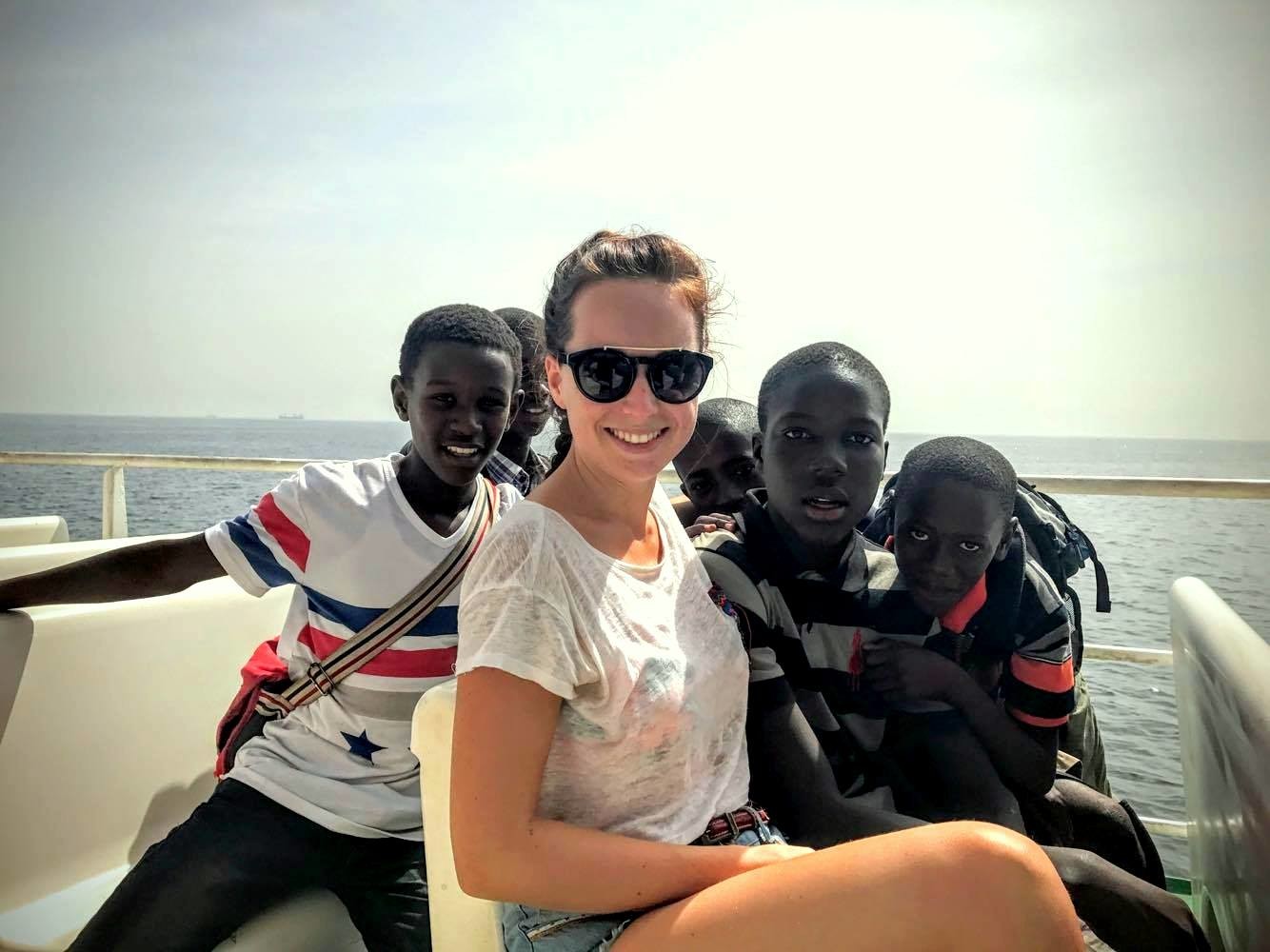
Friends I made on our way to Gorée Island.
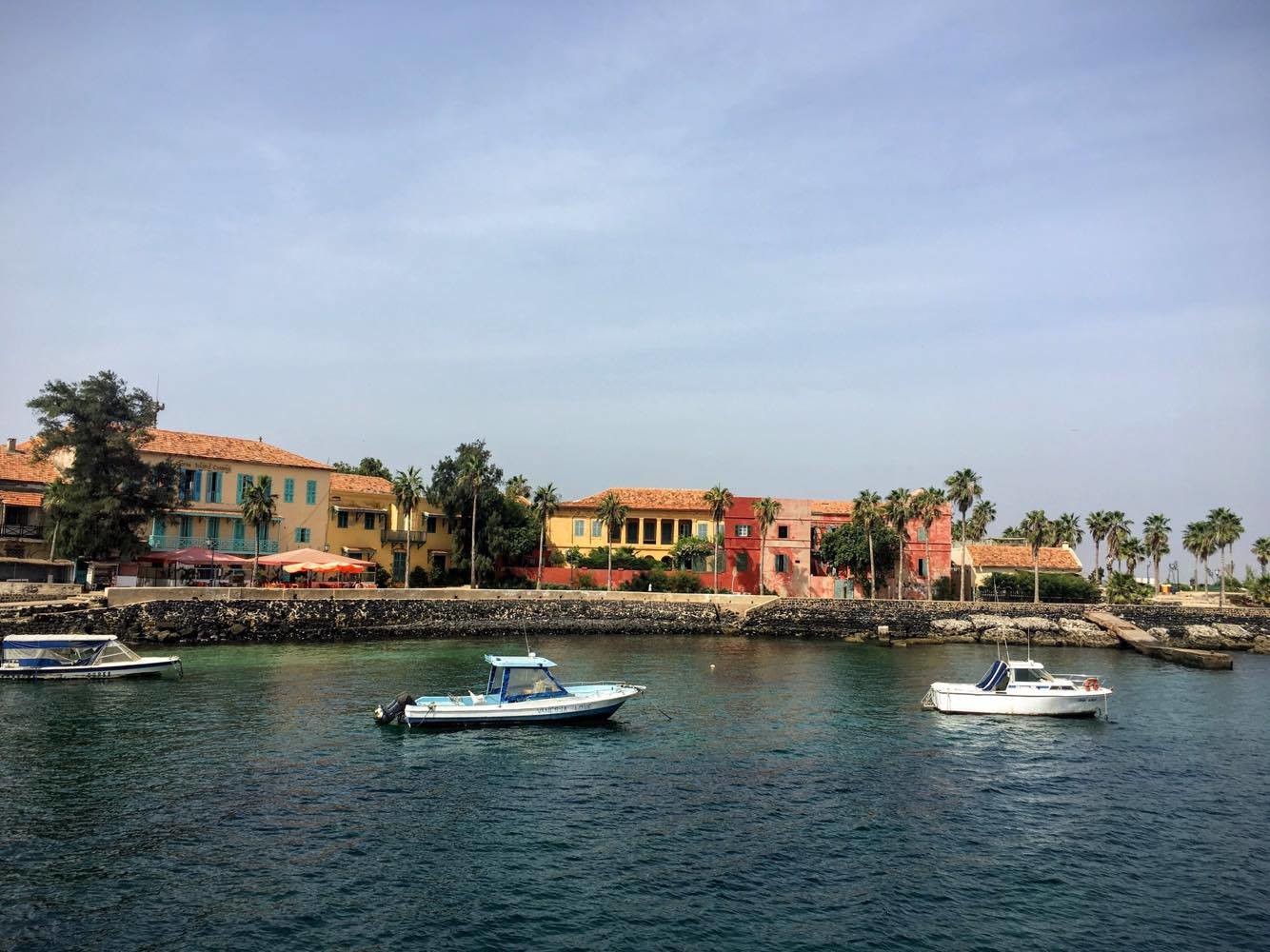
Gorée Island.

Gorée Island.

Gorée Island.
When we finished the island tour, we went for dinner to one of a few restaurants on island. It was more like a local family house with garden where tourists can eat. We got only two or three choices on the menu. I had fish that was so delicious and fresh that for a moment I thought it would even wink at me. However, some friends who ordered chicken were not that lucky. They all got a slight food poisoning. Because of this experience whenever you are eating on small islands or places where you do not really know the origin of your food, I would recommend eating the most natural option, which when on island would be fish or another sea food delicacy.
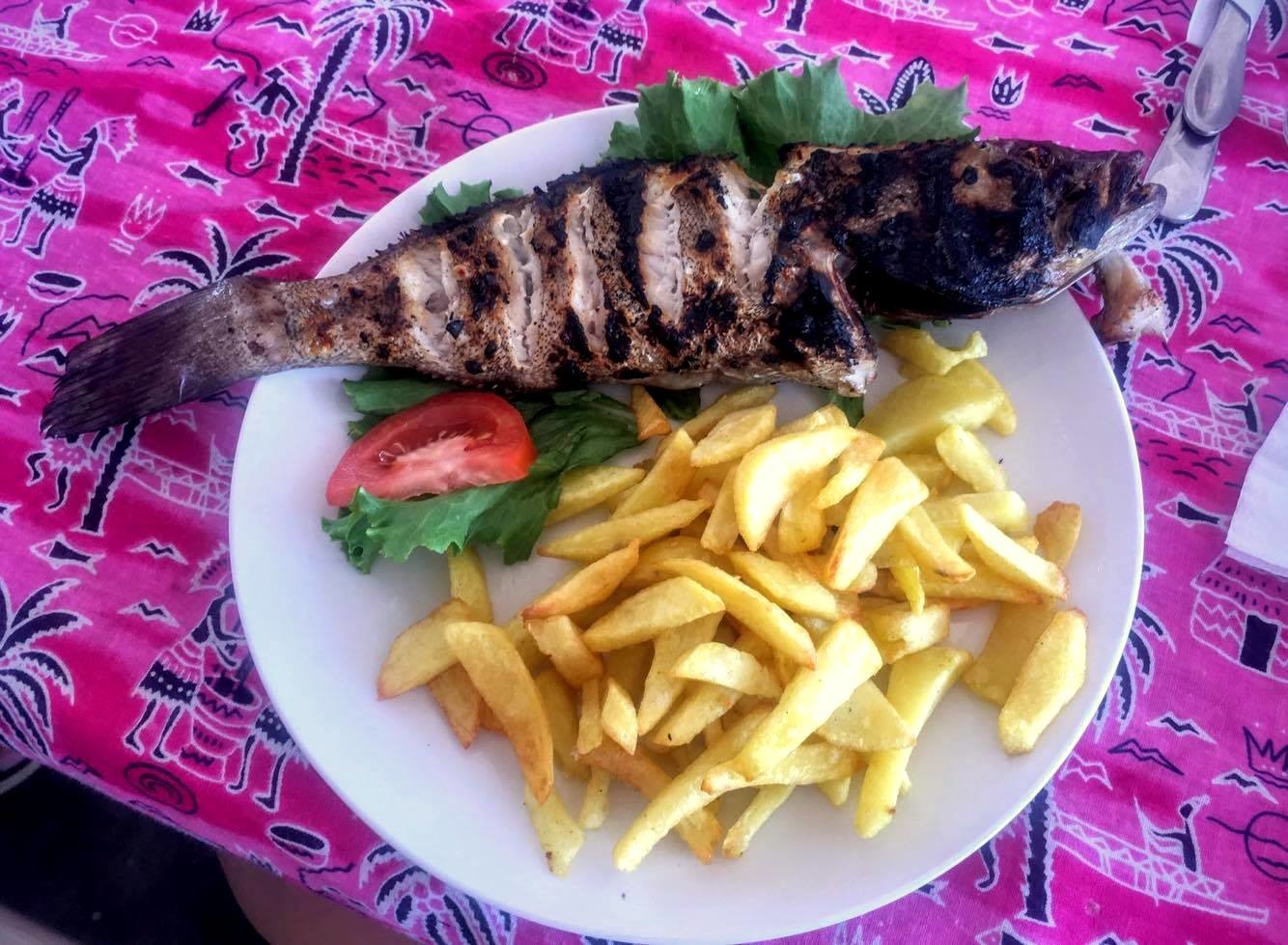
Fish & chips African style.
Gorée island was so beautiful. It was quite hilly so as we got to the top we had an amazing view of the whole island, surrounded by vast waters of Atlantic Ocean. Seeing that on a hot summer day, with sun in our faces made this visit a memorable and enriching experience.
Photo gallery
Content available in other languages
- Polski: Odkrywając Afrykę Zachodnią
- Italiano: Il nostro viaggio alla scoperta dell'Africa occidentale
- Português: Explorando a África Ocidental
Share your Erasmus Experience in Dakar!
If you know Dakar as native, traveler or as exchange student... share your opinion on Dakar! Rate different characteristics and share your experience.
Add experience →

























Comments (0 comments)